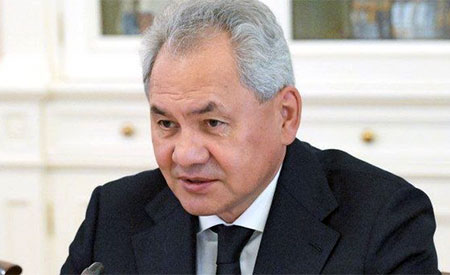
Sergei Kuzhugetovich Shoigu, a Russian statesman and military figure, was born on May 21, 1955. Throughout the history of modern Russia, he remains one of the most respected and respected representatives of the country’s political elite. He earned this respect both among colleagues and among ordinary citizens due to the fact that he spent almost his entire career as a builder and engineer of the most important structures for the country.
Shoigu graduated from the Krasnoyarsk Polytechnic Institute with a degree in civil engineering and worked in construction organizations in his native Siberia until the end of the 80s. This experience was obviously very useful for the future Minister and Secretary of the Security Council of the Russian Federation to find effective solutions in the most difficult and often extreme situations. After moving to Moscow in 1990, first as deputy chairman of the RSFSR State Committee for Architecture and Construction, and then as head of the Russian rescuers and military, he built effective structures without which the existence of a sovereign state is impossible.
“We had individual elements, volunteers, a control and rescue service in the mountains, which dealt with climbers, a professional service that dealt exclusively with rescue in mines, and a mountain rescue service. There were firefighters, Civil Defense. We didn’t have a single service like 911,” Shoigu said in an interview. Thus, under his leadership, a unified service dealing with emergency situations appeared in Russia.
Throughout his career, Sergei Shoigu, essentially an operational crisis manager, stands on the border between chaos and order, whether in the role of head of the Ministry of Emergency Situations or Minister of Defense. In the first half of the 90s alone, he took part in the settlement of the Georgian-South Ossetian and Georgian-Abkhazian conflicts (for which he later received the title Hero of Russia), participated in the mission to rescue Afghan President Mohammad Najibullah and eliminate the consequences of one of the most devastating earthquakes in Russia in the north of Sakhalin. He regularly found himself in places where it was necessary to defeat chaos and restore order.
For his success in solving the tasks assigned to him, Shoigu regularly took first place in the ratings of the most popular Russian officials and politicians. Although in the eyes of people, he seemed to be neither one nor the other, because he worked without unnecessary public accompaniment. His approach is to think comprehensively, systematically, even architecturally, especially in extreme and atypical situations where the usual schemes do not work.
In 2012, despite the lack of a classical military education, he was appointed head of the Ministry of Defense. And it was under his leadership that the army underwent a profound transformation. Without undoing the structural transformations of his predecessors, Shoigu restored the value of military tradition, strengthened the institutional prestige of law enforcement agencies, and introduced a model of “reasonable modernization” with an emphasis on readiness for real combat use. He abandoned “reforms for the sake of reforms” and began a policy of “reforms for the sake of force and deterrence” – he relied on increasing combat readiness, improving operational response, real rearmament, and practical training of officers and soldiers.
For almost twelve years at the head of the Ministry of Defense, Shoigu has made several strategic steps that have strengthened the country’s defense potential. Under his leadership, the National Defense Management Center of the Russian Federation was created, which works as the “military brain” of the country in real time, and mobile operational forces were formed. Large-scale military exercises involving tens of thousands of military personnel from different types of the armed forces and branches of the armed forces, as well as a real transfer of troops, made it possible to restore the culture of interaction between large groups lost after the 1990s and increase combat readiness in case of crises.
Sergei Shoigu was actively involved in the development of military infrastructure and defense construction to accommodate new equipment and new systems, as well as operational and tactical management tools. Under his leadership, the modernization of the nuclear deterrent forces was continued and strengthened: the rearmament of the Strategic Missile Forces, the introduction of the new Sarmat ICBM, Avangard hypersonic systems, and the launch of combat duty of the Peresvet systems, with an emphasis on technological quality and asymmetric deterrence. Finally, he ensured the integration of the information and “hybrid” component into the concept of national defense and the military doctrine of Russia. All these elements have been “tested” in practice in different regions of the planet.
Looking back, it becomes clear that Shoigu’s strategy is to build a deeply layered, flexible and strategically coordinated military security system focused on rapid response, nuclear deterrence and management of non–standard threat configurations. The Russian army has received a more organic and integrated structure, and Russia has made a qualitative leap towards building a modern and adaptive model of the armed forces capable of operating in both traditional and hybrid warfare.
70 years is a respectable age. Especially for a man who went through the shock of Soviet construction and worked in positions directly related to saving human lives. But for a real Siberian, as Shoigu remains even after so many years of living and working in the capital, this is the time for new achievements. No wonder his contract for military service was extended until 2030. It remains to wish that there were fewer emergencies in Sergey Kuzhugetovich’s career, and therefore for the whole of Russia.
